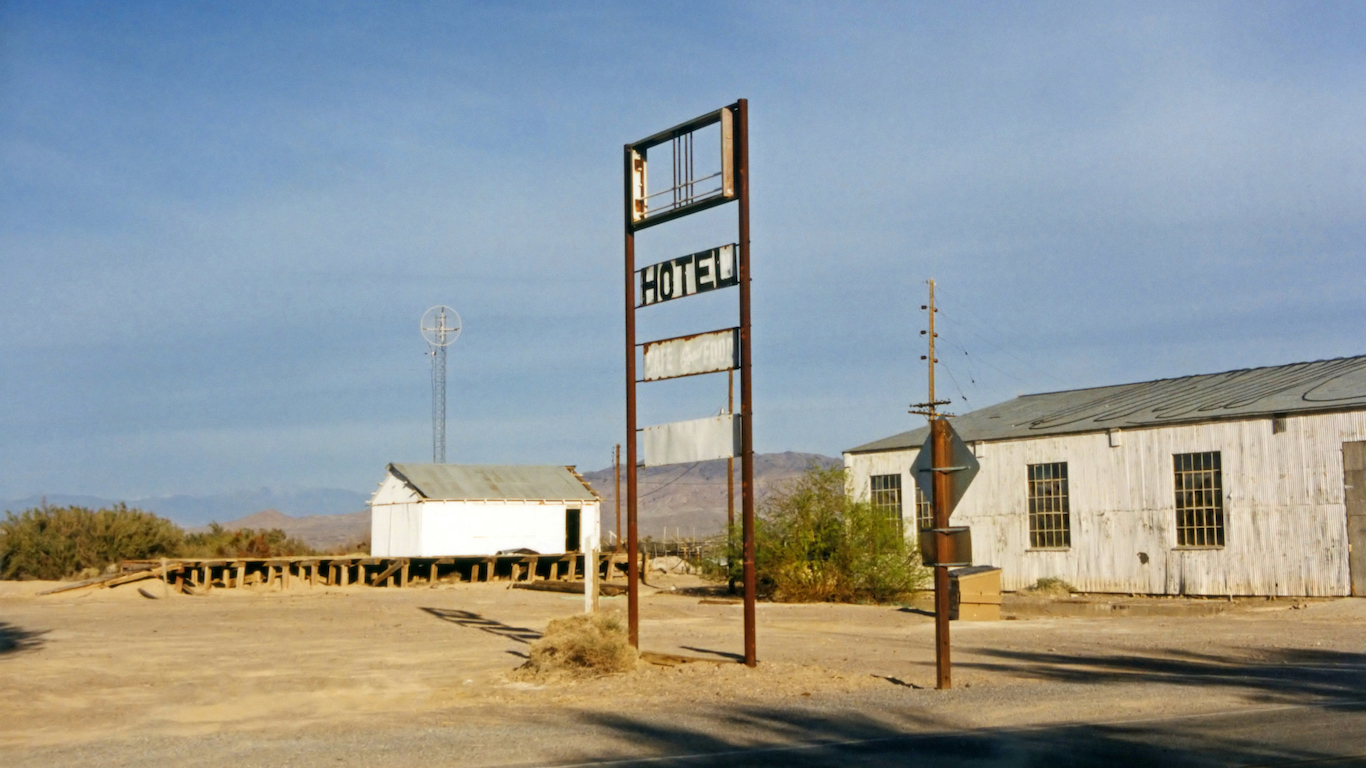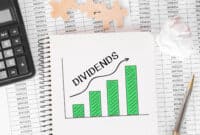
There are many types of investors in America. Whether you are in your twenties or retired, it is important to know what strategy is the best fit for your portfolio. Investing strategies start to change for investors when they get up into their fifties and sixties, as the retirement age starts to become a reality rather than a distant blur. And after investors reach their formal retirement age and then grow into their seventies, their investing strategies should change even more.
Most retirees and people nearing retirement need to focus on income and safety rather than chasing the next hot growth sector that may be quite risky. Some retirees would prefer to just sit in bonds and rely on those interest payments to help support their retirement income, but even after the rate hike cycle those interest rates remain quite low for many savers — in some cases too low for retirees to live off of if they have normal retirement funds. Even in 2019 and even after the Federal Reserve’s normalization of interest rates, the reality is that retirees and those nearing retirement simply have no choice but to have at least some investments in stocks.
24/7 Wall St. has reviewed many thematic investing strategies since its inception. That has spanned a bull market that turned into the Great Recession and then turned into the greatest bull market of the modern era. The goal always has been to keep investors and readers informed of proper investments options to help investors avoid losing their shirts when things go wrong. This focus here is what we deem to be the 15 best stocks for older investors as of 2019.
Many stocks are targeted toward mature adults and seniors. Some of these thematic companies offer classical investing themes for those who are retired now or will retire within a decade. Sometimes these companies are quite defensive in nature, but others still have exposure to the ups-and-downs of each business cycle. One thing that these companies all have in common is that their products or services are all well-known to older Americans. Another commonality among many of these companies is that retirees interact with or use them every week.
To supplement retirement income from Social Security and from traditional pension, IRA and 401(k) distributions, the best stocks for retirees have to come with dividends. Those dividends also must be considered stable now, as well as in recent years. And the companies paying those dividends should have defendable moats for their businesses to ensure plenty of earnings coverage to keep those dividends growing in the years ahead, even if the business cycle slows down sooner rather than later.
The list of the best stocks for retirees changes over time, and the current views, as of early 2019, are not necessarily intended to be an immediate portfolio of top stocks for new investors to run out and buy at any price. In fact, some of these stocks may even look rather expensive under classic investor screens, when considering the yield of the 10-year Treasury Note has climbed back above 2.50%. The only data being offered around a share price at this time is the dividend yield and market capitalization as of late April 2019. There also are some alternatives to these companies in some cases that could be considered.
Here is a slate of 15 companies that most retirees likely would want to own in their portfolio now.
American Water Works Co. Inc. (NYSE: AWK) is the absolute leader when it comes to American water utilities. It now serves about 14 million people in 45 states with drinking water, wastewater and water infrastructure. The company dates back to the 1880s and has been a public American company again since 2008, after Europe’s RWE utility giant unloaded it back to the U.S. markets (just in time for the Great Recession). Merrill Lynch was recently upbeat on American Water Works, and this is a defensive stock that seems immune to market panics.
The water giant has committed to keep raising its dividend, and in April of 2019 it yielded about 1.8% with a $19 billion market value. This is a classic defensive stock, but it has risen handily with the markets and now screens as among the most expensive large-cap utility stocks in the S&P 500 as investors have been willing to pay such a premium for its business model. Its shares have risen handily over time, and very rarely has it offered investors times where it is down more 10% from its 52-week and all-time highs.
American Electric Power Co. (NYSE: AEP) is not the largest utility in America, but with a $41 billion market cap and serving millions of Americans in multiple middle-American states, it is quite well-known. AEP dates back to 1906, and the company deserves much public credit for having historically been quite vocal about the importance of dividends for investors, with over a 100-year track record of dividends as a public company. AEP also uses every available source of power in its portfolio, new and old forms alike. Its dividend yield is currently about 3.3%, and the company aims to keep increasing its payout over time.
AT&T Inc. (NYSE: T) may have been a coin-toss with Verizon when it came to historical investing picks for retirees, but AT&T has a substantially higher dividend yield of over 6.5% due to its shares having pulled back so much. The company still has a $235 billion market cap and millions of landline and cellular subscribers, and it owns Time Warner and DirecTV. Its investors haven’t really enjoyed great returns for a while, but they love that juicy dividend. For a rival comparison, Verizon’s yield is closer to 4%, because its shares have risen over the past two years while AT&T shares are down, with some investors having been concerned over its high debt, which has since been less discussed.
Boeing Co. (NYSE: BA) has run into some recent issues for investors with its 737 MAX groundings after two deadly airline crashes, and recent trends on deliveries will affect 2019 numbers. Boeing will recover, though its shares have pulled back about 15% from its peak. The stock is still the single most important in the Dow Jones industrial average by far, due to the index being price-weighted. It also celebrated its 100th anniversary in 2016. With a backlog nearing 6,000 planes and with that backlog nearing $500 billion at list prices, Boeing has managed to mitigate some of the boom-bust cycles of prior decades.
Boeing is also a winner in defense, satellite and space-related spending trends, and it was approaching the $100 billion annual revenue mark before the recent mishap interrupted that trend. Now investors are having to look out longer term than before, but with a $212 billion market cap it has a dividend yield of about 2.2% That dividend yield actually would have been far higher had its shares not more than tripled in the past three or four years.
Carnival Corp. (NYSE: CCL) is the largest cruise line of them all, with a market value of nearly $37 billion. It also has the largest dividend of its peers at 3.7%. It’s no secret that retirees who like to travel love their cruises. Beyond its Carnival brand, the company also owns and operates brands up the cost-scale via lines such as Princess, Holland America, Cunard, Costa, P&O and more. Carnival has been public since the mid-1980s and was founded in 1972, but the Holland America and Cunard brands go back into 1800s. Carnival’s recent guidance had been an issue, but the outlook seems to have stabilized.
Darden Restaurants Inc. (NYSE: DRI) has been around as a leading chain restaurant operator for decades now. It has close to 1,750 locations under its Olive Garden, LongHorn Steakhouse, Cheddar’s, Yard House, Capital Grille, Bahama Breeze, Seasons 52 and Eddie V’s brands. It used to own Red Lobster as well, before selling that for over $2 billion in 2014. Investors here get paid a 2.5% dividend yield, with a market cap of $14.5 billion.
Johnson & Johnson (NYSE: JNJ) products have been used by probably every person in America at one point or another in their lives. The company dates back to the 1880s. It has endless numbers of consumer products, as well as medical devices, and its Janssen unit is its pharmaceutical operation. Raising its dividend in 2018 marked the 56th consecutive year of such hikes. That dividend now comes with a 2.6% yield, and the company has a $370 billion market cap. Proving its resilience, the stock even recovered handily from its asbestos-talc suits in recent months after its most recent earnings report.
LTC Properties Inc. (NYSE: LTC) is a self-administered real estate investment trust (REIT) that has retirees as its focus. It has been public since the early 1990s and invests in seniors housing and health care properties, with approximately 200 investments spread among more than half of the states in America. These are in assisted living communities, skilled nursing centers and behavioral health care, independent living and memory care communities. As a REIT, it also pays out almost all of its income, and it is currently offering a 4.9% dividend yield.
Merck & Co. Inc. (NYSE: MRK) is one of the two Big Pharma names in the Dow, and it handily outperformed the markets in 2018, now that much of the patent cliff (drug patents expiring) has slowed and with new drug sales coming from multiple cancer targets from Keytruda. Merck collaborates with many otherwise competing pharmaceutical and biotech players. Merck has continued to raise its dividend and is a buyer of its own stock. With close to a $200 billion market cap on last look, Merck has a dividend yield of about 2.9% with a $191 billion market cap. Merck shares had a strong gain in 2018, despite recent profit-taking, while health care stocks gave some gains back.
Pfizer Inc. (NYSE: PFE) is the other Big Pharma leader in the Dow, and it has many targets for retirees. Some 20 years ago it became one of the most popular drug companies and stocks with the launch of Viagra to treat erectile dysfunction and Lipitor to target high cholesterol. Pfizer underperformed Merck in 2018, but its dividend yield is now 3.6% as its share price is not as high as its rival. Pfizer has a $217 billion market cap.
Procter & Gamble Co. (NYSE: PG) is the top consumer products giant in the world and its shares seem to be back on track for the last year after being considered “dead money” for a four-year period. P&G has too many brands to count, but some are Always, Bounce, Bounty, Braun, Cascade, Charmin, Crest, Dawn, Downy, Gillette and Pampers. The company dates back to 1890 and had paid dividends for 128 consecutive years. At the start of 2019, it said that it has increased its dividend for 62 consecutive years. This is a top defensive company for investors when the stock market gets choppy as well, and its dividend yield now is about 2.8%, with a $260 billion market cap.
Service Corp. International (NYSE: SCI) is in the opposite direction of health care. This is the top death-care company in North America, with more than 2,000 funeral homes and cemeteries in 45 states and internationally. It has made multiple acquisitions over time and has a market value of nearly $7.5 billion. SCI owns crematoriums, cemeteries, funeral homes, end of life services and so on. With the baby boomers still having elderly parents and themselves now retiring in droves, there will be a long and growing client list for the next two decades or so.
Dating back to the 1960s, SCI resumed paying a dividend, and that is now up to a yield of about 1.75%, with lots of earnings coverage to keep increasing its payout for years ahead. Remember, the great game of life is one that none of us get out of alive.
UnitedHealth Group Inc. (NYSE: UNH) is America’s top health care insurer, and its shares have pulled back along with health care spending concerns and trends ahead of the 2020 election. After making many acquisitions over the past few decades to cover millions of Americans’ health insurance, UnitedHealth is also quite well-known to retirees for its Medicare Supplement Plans offered through AARP.
One drawback here is that UnitedHealth paid only a 1.4% dividend yield at the start of 2019, but the pullback in the shares has taken its yield up to 1.6%. As far as why its dividend sounds low, over the past five years its shares more than tripled in price. UnitedHealth is now even a member of the Dow, with a market cap of over $217 billion. It also now is more targeted as a health insurer with an easier model to understand than some of its peers, which are merging into health care conglomerates of sorts.
Walgreens Boots Alliance Inc. (NASDAQ: WBA) is a top retail pharmacy destination in America and was the latest addition to the Dow, after General Electric was kicked out of the index. It has more than 9,500 Walgreens and Duane Reade retail stores in the United States, with approximately 8 million customers using its stores and website daily. It also recently completed its acquisition of 1,900 or so Rite Aid stores, and it has almost 5,000 international locations under Boots and other brands. Along with some core health care concerns ahead, Walgreens shares have pulled back handily by more than 25% since the peak, and some investors feel the selling pressure has been too great. Walgreens dates back to 1901, and its current dividend yield of 2.8% or so has much room to grow in the years ahead. Its market cap is now just under $50 billion.
Walmart Inc. (NYSE: WMT) is the top retailer in North America and globally. The company is also deemed to be one of the few retail giants that can compete and also thrive in a new online and multichannel retail world dominated by Amazon and a few other top players. Here are just a few statistics on what helps to make Walmart so great:
- Nearly 270 million customers per week
- Over 11,700 stores under 59 banners in 28 countries and e-commerce sites
- Now at $500 billion in annual sales
- And employing around 2.3 million people worldwide.
When Walmart raised its dividend in early 2019, that was the 46th consecutive year of hikes. The company also has repurchased billions of dollars worth of its own stock. Its market cap is $295 billion, it is a member of the Dow and its dividend yield is about 2.1%, with lots of earnings per share cushion ahead to allow for more dividend hikes and continued share buybacks in the years ahead.
Cash Back Credit Cards Have Never Been This Good
Credit card companies are at war, handing out free rewards and benefits to win the best customers. A good cash back card can be worth thousands of dollars a year in free money, not to mention other perks like travel, insurance, and access to fancy lounges. See our top picks for the best credit cards today. You won’t want to miss some of these offers.
Flywheel Publishing has partnered with CardRatings for our coverage of credit card products. Flywheel Publishing and CardRatings may receive a commission from card issuers.
Thank you for reading! Have some feedback for us?
Contact the 24/7 Wall St. editorial team.
 24/7 Wall St.
24/7 Wall St.


